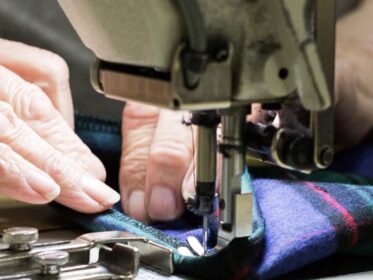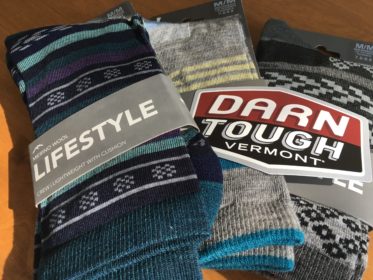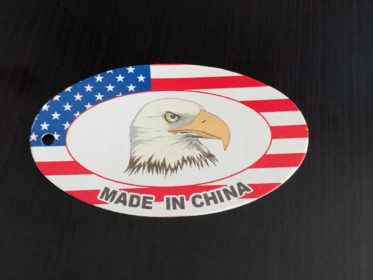Nestled into a brick building in the Old Port section of Portland, Maine, the Vermont Flannel Company store welcomes passersby to step in and say hello.
Indeed, my dog Rocky and I were warmly greeted by sales associate Matt Hinds; he knew we were coming and had treats ready for Rocky. He also didn’t chastise him for putting his paws on the counter.
“Do you know how many dogs do just the same?” he said with a laugh. Ah, awesome. A dog-friendly store!
The winter sun streamed in from the street-facing window, lighting up the colorful items neatly aligned on shelves and racks. Although small, the space is cannily set up to hold a great deal of merchandise, plus a seating nook where your dog can try out a flannel-covered dog bed.
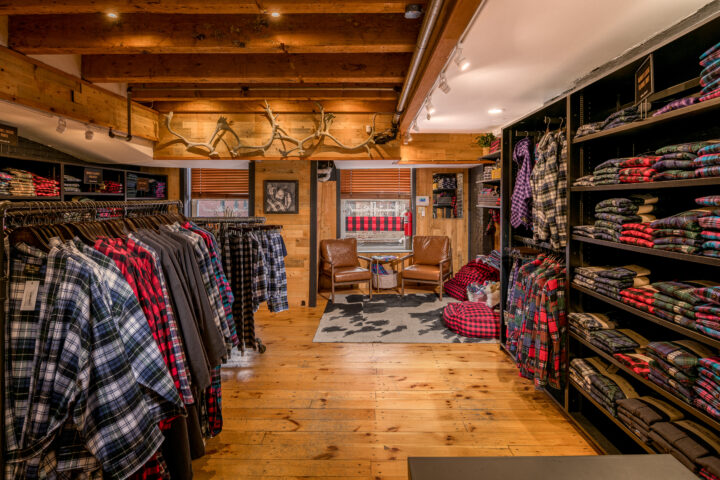
Matt gave us a tour, and with each item he pulled off the shelf or rack, my impulse was to say, “Yes, please!” I could see my son wearing The Oxford Fitted Shirt and boy, could I use a pair of flannel-lined jeans for cold winter walks, and another pair of lounge pants (or pajama bottoms), too.
I ended up buying a stadium blanket for my son and Rocky received a free dog bandana (via the in-store “spend $100 dollars, get a scarf” promo). I held off on the dog bed. Rocky is still growing, ha!
“My initial reaction to a Vermont Flannel store was the same as yours,” says Matt Bigelow, President and COO of Vermont Flannel Company. “We see customers with the same look of delight when they visit. It’s like going to Vermont and visiting a fifth-generation sugar shack!”
Started by Mark and Linda Baker . . . Now managed by USA Brands
When the Bakers founded Vermont Flannel in 1991, they made a commitment to keep manufacturing in the United States. At the time, domestic apparel manufacturing was already in decline, and ensuing trade agreements made manufacturing even more difficult – for companies large and small.
While outsourced manufacturing drives down costs for consumers, it ends up killing domestic manufacturers, who can’t compete due to higher costs in the form of wages, intense regulations, and taxes.
“The Bakers were always one bad season away from closing up shop,” says Bigelow.
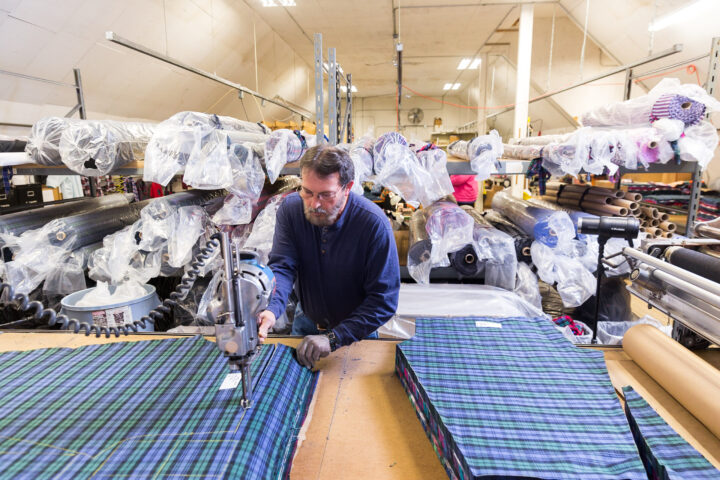
In 2019, Mark and Linda were ready to retire and were approached by a number of buyers, including private equity who wanted to move operations to China.
“Mark said, ‘That’s not my legacy,’” says Bigelow. “When he learned about All American Clothing and their mission, he realized he wanted his brand to be part of the business long-term.”
Founded by father and son Lawson and BJ Nickol, All American Clothing had started as a jean business in Ohio. The duo ran the company together until the mid-2000s, when Lawson was diagnosed with Alzheimer’s and passed away.
In 2022, a strategic partnership between All American Clothing and Vermont Flannel was formed called USA Brands. USA Brands is committed to providing quality-made domestic clothing to consumers on a national scale at reasonable prices – as well as to promoting American jobs and American craftsmanship.
Joe Van Deman, responsible for managing All American Clothing since 2019, became CEO of USA Brands. BJ Nickol continues to work in marketing and technology functions. Mark and Linda Baker stay involved in product development – but now spend time with their adult children and grandkids while traveling around the country.
Quality you can feel and see
According to Bigelow, Vermont Flannel fabric is custom-made to their precise specifications at the finest mills in Europe, using antique machines and traditional methods. This level of artisanal quality is not currently available in America, where commercial flannel production is extremely limited.
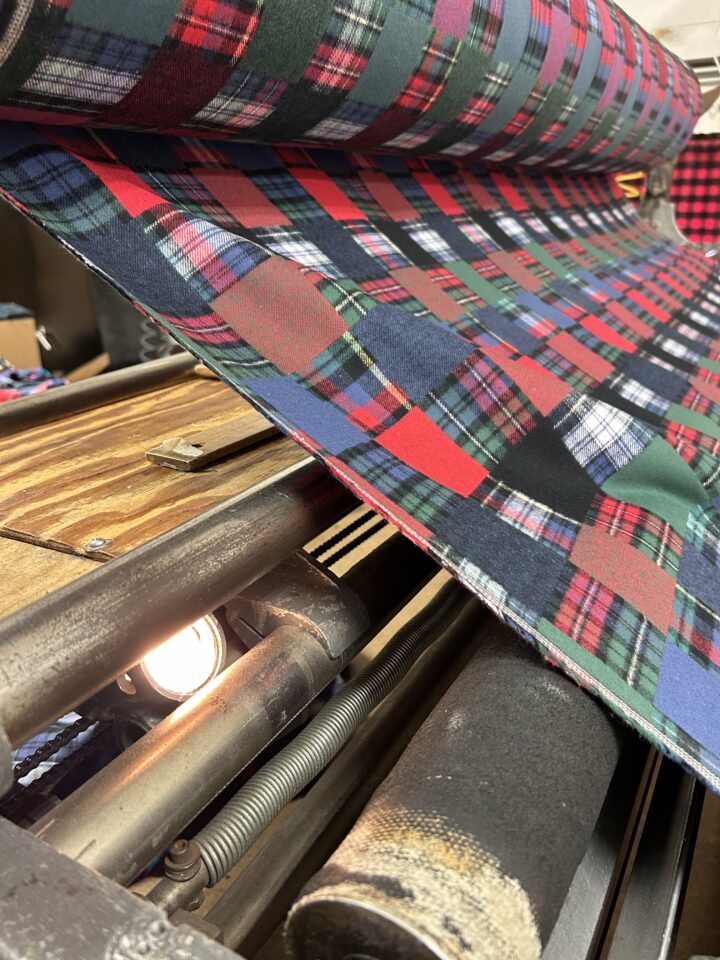
I noticed the difference immediately when I ordered a bathrobe and then lounge pants. The material is super thick, warm, and soft. It feels luxurious against your skin – especially when wearing a scarf under a winter coat.
“You can feel the difference,” says Bigelow, “because the material is double-brushed – meaning, each side is brushed.”
Vermont Flannel’s fabric brushing process, mastered over centuries by artisans, fluffs up the texture or ‘nap’ of the fabric, raising the fibers and creating pockets of air that contribute to the warmth and softness.
As part of its mission, Vermont Flannel’s price points are in-line with competitors. Bigelow, a born and raised Mainer and self-described L.L. Beaner growing up, says he’s compared his company’s flannel shirts with Bean’s – and he’s astonished at the lower grade fabric they use.
“When you buy a flannel shirt, or any item, from Vermont Flannel, you’re getting a highest quality garment that’s also made in the United States,” says Bigelow. “I visited a retailer of flannel shirts in Boulder. The flannel was high quality, but the shirts had been manufactured outside the United States. When you buy from us, you know who you’re supporting.”
Consumers feel a renewed sense of pride in American-made
According to Bigelow, he and other members of the USA Brands management team closely follow several trends – and they see things moving in the right direction.
Environmental sustainability is something many companies tout when describing how their goods are manufactured, but they fail to note the environmental costs with shipping items in huge containers across the ocean.
“Buying local,” says Bigelow, “has come to mean more than simply patriotism. It’s also about recognizing that how you spend your money affects you and your community. For example, my family and I spent time in Michigan. As soon as you cross the state line, you can see the impact of the manufacturing exodus – the state doesn’t have money to put into roads.”
The third trend is also interesting: the impact of technology and automation. According to Bigelow, textile production has increased year over year in the last several years – as has apparel production. However, this hasn’t translated into jobs – yet.
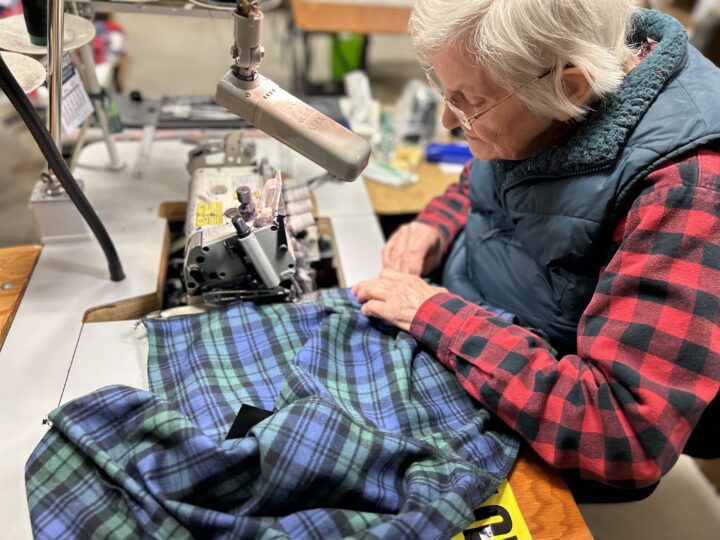
Bigelow is optimistic. “If we can get the industry back, we’ll get the jobs back. With soft goods, it’s harder to have machines do all the work. By keeping manufacturing in the United States, we’re able to pass down generational knowledge – something that’s lost forever when a production process, such as weaving, is sent overseas.”
Vermont Flannel becomes part of your life
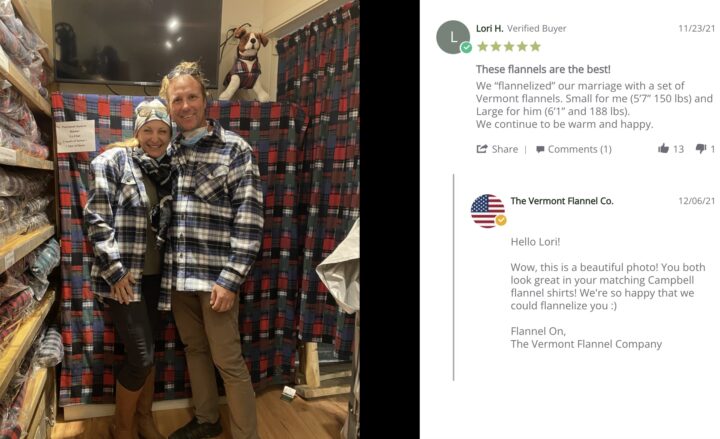
When I asked Matt Bigelow what type of feedback he receives from customers, he paused for a minute. “Well,” he said, “We often receive feedback from customers who are still wearing the same shirts they purchased back in the 90’s. That says something about the quality of our products.”
As someone who now wears Vermont Flannel lounge pants as pajamas – trust me, once you put them on, you want to live in them – I completely understand.
One of the many reasons I buy Made in USA items is because you do know where your goods are made and by whom.
When I put on my Vermont Flannel robe, or tuck my scarf under my coat, I feel attached to the company and the people who made my items. It makes me feel like I’m part of an extended family.
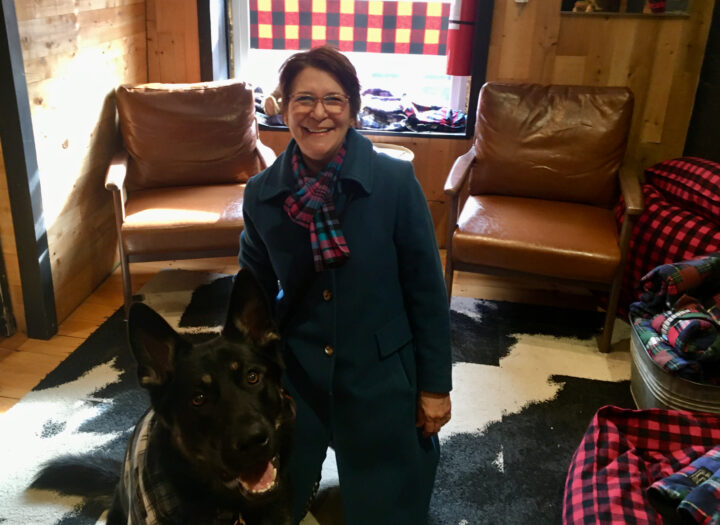
All Vermont Flannel products are hand cut and sewn in America, with two production facilities in Vermont, located in Johnson and East Barre. Goods are shipped from a centralized fulfillment center in Ohio, and can be ordered online or purchased at one of eight retail locations — six in Vermont and two in Maine.
To learn more — and purchase items — visit the Vermont Flannel website: https://www.vermontflannel.com/
And be sure to view their “Meet the Maker” blog as well. Lots of stories of cool people making some really neat stuff! https://www.vermontflannel.com/blog
Get the Keep It Made USA newsletter.
Twice monthly; zero spam.
Full Disclosure
I’m not paid nor asked to write about products or the companies that make them. All links in this piece are FREE — meaning, they’re not sponsored or paid for.
My mission is to keep manufacturing jobs stateside and this blog is my way of giving back. We like to think a “small” choice, such as purchasing something made in the US by American workers, won’t make a difference. It does.

